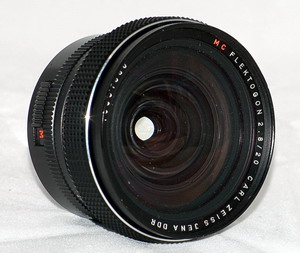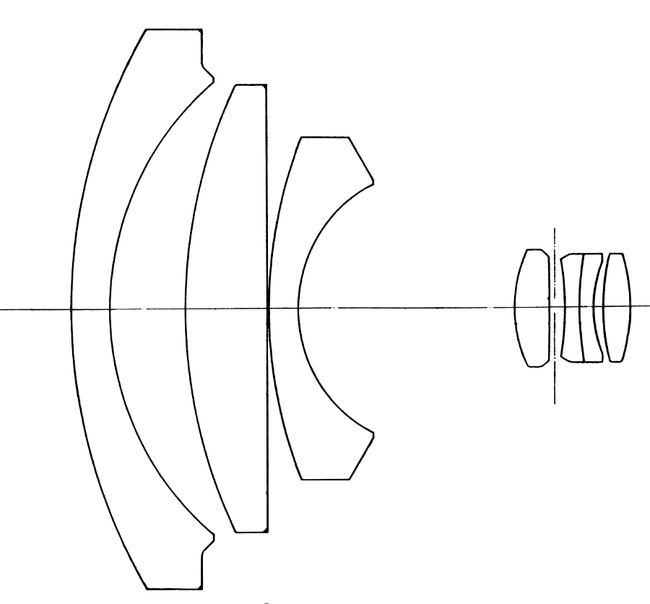The Lens details of a series of images taken by Steve Cushing on mirrorless camera.
The 20mm Flektogon has the same advantages as its’ little sister the Carl Zeiss Flektogon 35mm (close focusing, sharpness and a good bokeh). It offers a much wider angle of view with 93° compared to the 62° of a 35mm lens (on full frame cameras). What really sets the 20mm Flektogon apart from other super wide angle lenses is not only the close focusing distance but also that it is a relatively sharp lens at f2.8. This makes it suitable for available light photography in most cases. Obviously all this goodness comes at a price premium with the 20mm Flektogon being about twice as expensive as the Carl Zeiss Flektogon 35mm.
This HistoryThe Flektogon and its brother the Angénieux retrofocus are the grandfathers of all modern wide-angle lenses, and prior to their invention in 1949, wide-angle lenses for 35mm SLR cameras simply didn’t exist. Their birth can be traced back to the days just after the end of World War II when the very first single-lens Reflex (SLR) pentaprism cameras, such as the Rectaflex and Contax S, hit the market. While SLR cameras would go on to revolutionise photography and become the dominant form of 35mm camera, in the early 1950s their invention created problems for lens designers.
With his invention of the
Biogon 35mm f/2.8 lens for the Contax camera in 1934 (reviewed on this site) Ludwig Bertele had shown that lenses with an angle wider than 60 degrees were possible on a 35mm camera. However this type of lens was unsuitable for SLR cameras because they required a much longer flange focal distance (the distance between the lens mounting flange and the film plane). For example, the flange focal distance of a Leica rangefinder of the time was 27.8mm, whereas the flange distance on the Contax S camera was 44.4mm. Wide-angle lenses for SLR cameras required additional space for the internal reflex mirror, and the existing lens designs of the pre-SLR days could potentially hit the SLR’s mirrors, a problem that still exists to this day.
The solution to both problems was solved by two companies at almost the same time, independently from each other, on separate sides of what was then the Iron Curtain. These were the team of Harry Zöllner and Rudolf Solisch at VEB Carl Zeiss Jena in what was then East Germany, and Pierre Angénieux at his own company in Paris. By 1950 they had both applied for patents for 35mm wide-angle lenses for 35mm SLR cameras.
For years lens makers had tried to produce a 35-mm wide-angle for the Exakta but had been stumped by one basic handicap. A lens of conventional design would require a long rear element that would have to penetrate deeply into the camera body, an impossibility with the Exakta because of the mirror. Etablissements Angenieux de Paris solved the problem with a startling idea-inverting the optical system of a telephoto lens so the lens does not penetrate deeply yet provides a short focal length. This idea produced the remarkable 35-mm Retrofocus with a 64° angle of view.” – Angénieux brochure 1952.
While they both solved this dilemma, their methods were quite different. Except for the front meniscus element, Pierre Angénieux’s Retrofocus type R1 35mm f/2.5 was a five element Tessar in three groups, which was pretty standard for the time. Zöllner and Solisch’s solution was a more complicated Biometar type configuration, again increased by the added front element of considerable diameter with a large air distance from the rear elements.
Neither Angénieux, Zöllner nor Solisch cannot be regarded as the inventors of the retro-focus lens, as they based their designs on the principle of the inverted telephoto lens which had been invented in 1931 for cine cameras by Horace W. Lee at Taylor, Taylor & Hobson (GB Patent 355,452 and US Patent 1,955,590). However, they were both simultaneously the first to have created wide-angle lenses for 24×36mm format on 35mm SLR cameras. Because of the limitation of glass technology, coatings, angle of view and the oblique incident rays of light desired, creating wide-angle lenses has always been challenging. Credit must go to these men who achieved their solutions at a time before computer-aided design.
This Lens
The
Carl Zeiss Flektogon 20mm 4 followed and the Carl Zeiss Jena 20mm 2.8 was the later successor of this 20mm Flektogon 4.
This is a superb lens, it has very deep colour saturation, excellent contrast and very good resolution. Almost every owner has very good opinion from this lens, compared with Canon and Nikon premium glasses, there is little or no difference between them and sometimes I think this Flektogon is better. This lens is quite rare not very common and well respected in Eastern Europe.
The 20mm f2.8 Flektogon is a wide-angle lens manufactured by Carl Zeiss Jena in East Germany.
Type: wide-angle
Name: Carl Zeiss Jena Flektogon 2.8/20mm
Coating: Single-coated glass
Focal lenght: 20mm
Maximum aperture: f/4
Minimum aperture: f/22
Quantity of ap. blades: 6
Lens scheme: 7 elements in 6 groups
Closest focusing distance: 0.19m
Filter/attachment size: 77mm
PROs:
- Build quality is excellent
- Sharp wide angle lens
- Focusing range of only 19cm
- At f2.8 it is pretty fast for such a wide angle lens
- Bokah
- Price (for a mint 20mm f2.8 Flektogon lens you will have to pay approximately 400 Euros)
- A bit soft in the corners when shot wide open
- As with every extreme wide angle lens there tends to be some distortion
The 20mm f2.8 Flektogon is famed for the lack of distortion. Architecture and landscape photographers love this lens because lines turn out very straight. I totally agree, the lack of distortion is remarkable – hats of to the engineers at Carl Zeiss Jena for pulling that off. You will not spend time in post production to straighten lines.
Contrast is good and colours are faithful. This Flektogon is also very sharp in the center of the image. The bokeh is also rather interesting and swirly. When you combine these factors and add the lack of sharpness in the corners and the vignetting you can take rather unusual looking pictures which look almost as if you are shooting through an old looking glass. Obviously this is not to everyone’s taste but if you are on the experimental side you will have a lot of fun with the old Carl Zeiss Jena Flektogon.
CONs:
- Vignetting
- Soft in the corner
- Chromatic aberration






